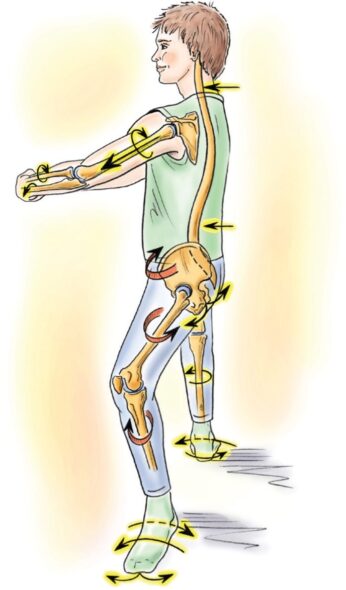STRENGTH SENSEI BOOKSHELF
Dynamic Alignment Through Imagery
Studying anatomy and biomechanics is not at the top of the list of most personal trainers and strength coaches, but an understanding of these subjects is essential if you want those you train to perform their best. Eric Franklin makes these subjects, if not exciting, at least more interesting.

This is the third edition of Dynamic Alignment Through Imagery, and it’s written not just for those in the performing arts, but anyone involved in athletics and injury rehabilitation. The book is a monster at 512 pages, but the text is broken up with over 500 full-color illustrations to make it an easier read. And it’s not just a collection of connect-the-dots anatomy drawings but includes creative graphics that explain how the body works and moves.

Franklin earned academic degrees from the University of Zurich and New York University’s Tisch School of the Arts and has taught movement conditioning since 1986. He calls his method of teaching through imagery the Franklin Method. “The purpose of good alignment is to create efficient, coordinated, and healthy movement,” says Franklin. “The obvious conclusion is to improve alignment dynamically through movement practices rather than static positioning of the body.”
Franklin divided his book into four parts designed that build on each other to teach you practical principles of anatomy and biomechanics.
- Posture and Dynamic Alignment
- Biomechanical and Anatomical Principles and Exercises
- Exercises for Anatomical Imagery
- Returning to Holistic Alignment
Although you may be tempted to skip right to learning the exercises in Part 3, reading the book from start to finish is best to understand why the exercises were selected.
To be clear, Franklin discusses many basic and advanced principles of biomechanics, from explaining joint and muscle function to the laws of motion and force systems. Along the way, you’ll also learn quite a bit about anatomy.

In addition to illustrations, the reader will gain access to audio recordings explaining Franklin’s approach to teaching. The recordings range from eight minutes to 12:30, discussing topics that include anatomical planes, dynamic alignment, and the role of the senses.
For those who work with the senior population, particularly those who are sedentary, Dynamic Alignment Through Imagery provides a solid understanding of how the body should move and simple exercises to help improve quality of life. For those who work with athletes, it offers insight into the rehabilitation process.
Dynamic Alignment Through Imagery is certainly not the only book you should study to learn anatomy and biomechanics. However, the content is presented to give you a good foundation for studying human movement and inspire you to learn more. (TSS)
[You can purchase Dynamic Alignment Through Imagery by Eric Franklin in Kindle and paperback versions through Amazon.com.]
